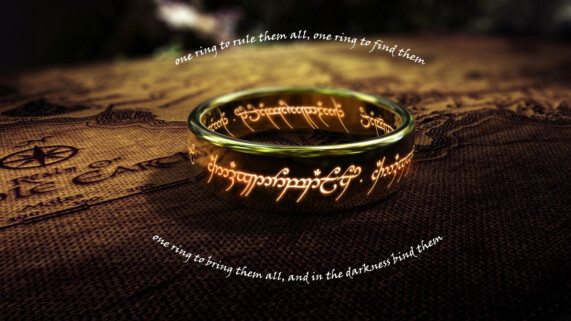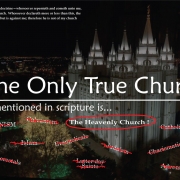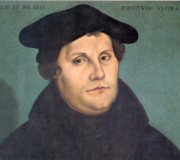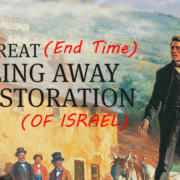The Priesthood of God & Its Relationship to the Only True Church Doctrine
.
The Melchizedek or Higher Priesthood– A Symbol of the Heavenly or Spiritual Church and Universal Priesthood
As opposed to the lower temporal nature of the Aaronic Priesthood Joseph Smith defined the Melchizedek priesthood as holding,
18 …the keys of all the spiritual blessings of the church—
19 To have the privilege of receiving the mysteries of the kingdom of heaven, to have the heavens opened unto them, to commune with the general assembly and church of the Firstborn, and to enjoy the communion and presence of God the Father, and Jesus the mediator of the new covenant (D&C 107:18–19).
The “general assembly and church of the Firstborn” is described in D&C 76 as all those in the heavenly church (men and women) who have attained a celestial glory— which makes all of them “priests and kings, priestesses and queens” after the order of Melchizedek, being equal to God and each other “in power and in might and in dominion” (see D&C 76:56–95. esp v. 56-57,67,95; also Heb 12:22–23; D&C 107:8–10; Alma 13). In other words, the earthly Melchizedek Priesthood is meant to prepare individuals to commune with, and typify or be a symbol of, the one true spiritual church as it exists in heaven. An order of higher dimensional beings who live in complete equality and harmony regardless of race, position or gender (D&C 76:59,95; D&C 105:4; D&C 38:24–27).
Its nature in transcending organizational and cultural lines is explained in scripture and part of the symbolism wrapped in the name itself—Melchizedek’s Priesthood being outside and greater than Israel’s Priesthood. Hebrews 7 explains this concept to justify to the Pharisees & Jews that Christ actually did meet the priesthood requirements of the Messiah set forth in scripture. In Paul’s time many of the Jews of the day were looking for a Jewish Messiah who met the priestly conditions given in Torah verses like Psalm 110 which describes a military leader like Joshua of old who would “crush the kings of the day” (v. 1 & 5) but who was also a Jewish priest (v. 4). In fact this is why many Jews accepted John the Baptist as a holy fulfillment to scripture (because he was a legitimate Levite/priest) but rejected the Jesus who “sprang out of Juda; of which tribe Moses spake nothing concerning priesthood” (Heb 7:14). Hebrews argues that Jesus was indeed a priest and received his priesthood from a higher source than Aaron or Moses. He was a priest “after the order of Melchizedek” and received an oath, covenant and higher “spiritual priesthood” of the same higher order as Melchizedek who gave Abraham, Issaac & Jacob the priesthood in the first place. One “without father or mother, without genealogy, without beginning of days or end of life” (Heb 7:3), or one which needed no earthly ordinance, or pedigree and transcended human culture and mortal life.
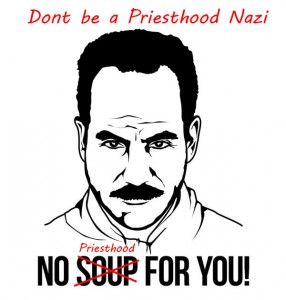 I appears that just like Mormons can be, the Jews were often stuck on the idea of priesthood elitism and religious legalism. The chief priests and Pharisees seemed captive to the doctrine that salvation came only through the Rabbinical law and the Levitical priesthood. They obviously didn’t understand the symbolism in the system or their roles in that system. Their pride wouldn’t let them comprehend that “a greater than Solomon” or greater than Abraham could ever humbly walk hidden among them (see Matt 12:42, John 8:52–58). They didn’t understand that they were only one of several groups that Melchizedek gave the priesthood to—and that Melchizedek was only one of many “Sons of God” (and daughters of God) that continually give the true higher spiritual priesthood to the worthy people of earth. Or that the church in heaven eventually authorizes and exalts all worthy groups with needed authority once they prove their worthiness—so there is no reason for feelings of superiority. They didn’t understand that the Higher priesthood works above and apart from the various religious priesthoods of the earth. And that it’s messengers often act in secret, testing members of the lower priesthoods in ways that shatter their preconceived notions of divinity and divine election (Heb 13:2, Gen 19, John 1:10). Unlike Sauron’s or Satan’s false priesthood, the true heavenly High Priests do not wear their priesthood on their sleeves, fingers, heads or aprons! (ie. Think of what the LDS temple endowment presentation teaches of those who flaunt their priesthood or use it to legitimize their authority)
I appears that just like Mormons can be, the Jews were often stuck on the idea of priesthood elitism and religious legalism. The chief priests and Pharisees seemed captive to the doctrine that salvation came only through the Rabbinical law and the Levitical priesthood. They obviously didn’t understand the symbolism in the system or their roles in that system. Their pride wouldn’t let them comprehend that “a greater than Solomon” or greater than Abraham could ever humbly walk hidden among them (see Matt 12:42, John 8:52–58). They didn’t understand that they were only one of several groups that Melchizedek gave the priesthood to—and that Melchizedek was only one of many “Sons of God” (and daughters of God) that continually give the true higher spiritual priesthood to the worthy people of earth. Or that the church in heaven eventually authorizes and exalts all worthy groups with needed authority once they prove their worthiness—so there is no reason for feelings of superiority. They didn’t understand that the Higher priesthood works above and apart from the various religious priesthoods of the earth. And that it’s messengers often act in secret, testing members of the lower priesthoods in ways that shatter their preconceived notions of divinity and divine election (Heb 13:2, Gen 19, John 1:10). Unlike Sauron’s or Satan’s false priesthood, the true heavenly High Priests do not wear their priesthood on their sleeves, fingers, heads or aprons! (ie. Think of what the LDS temple endowment presentation teaches of those who flaunt their priesthood or use it to legitimize their authority)
This reasoning is of course nothing new. Thousands of protestant reformational Christians spanning from Martin Luther to the present, have used these and many other biblical scriptures to support the idea of some type of Universal Priesthood, or priesthood of all believers. I believe that LDS scripture supports parts of this belief, and holds the keys to reconcile the idea of a higher universal priesthood with that of a lower ministerial priesthood.
The Higher Priesthood Governs Many Different Lines
Paul goes to great lengths to try and explain the concept that there can be multiple separate priesthood lines to Peter and the early Church Leaders in the New Testament. Just as Abraham’s contemporary, Esaias, recieved the preisthood directly from God instead of from Melchizedek (see D&C 84:12–14, JST Gen 14:25–40, Alma 13:14–19), Paul received his authority from the resurrected Lord—not from Peter. He specifically dedicates two chapter in Galatians explaining this
I want you to know, brothers and sisters, that the gospel I preached is not of human origin. 12 I did not receive it from any man, nor was I taught it; rather, I received it by revelation from Jesus Christ…. 15 But when God, who set me apart from my mother’s womb and called me by his grace, was pleased 16 to reveal his Son in me so that I might preach him among the Gentiles, my immediate response was not to consult any human being. 17 I did not go up to Jerusalem to see those who were apostles before I was, but I went into Arabia. Later I returned to Damascus. (Gal 1:11–18 NIV)
He specifically tells the Galatians that he preached for “three years” before he went up to Jerusalem to even meet Peter (v. 18). In fact, in his letter to the Galatians he seems to be countering contemporary misinformation such as that in Acts 13:3, when he says that he preached for “fourteen years” before he went to Peter for an extended visit “in response to a revelation” to make sure they were in accord [2b]. Contrary to the assertions of some Mormon leaders (see here for instance), Paul never alludes to being ordained to his apostolic office (1 Cor 9:1–2) by Peter, and in fact goes out of his way to suggest the opposite. He also tells of his confrontation with Peter concerning the hypocrisy of forcing his gentile flock to conform to cultural strictures of Peters Jewish branch of the church (circumcision in particular). And tells of their agreement that Paul’s calling and purpose was separate and different than their own, but from the same Lord.
the leaders of the church had nothing to add to what I was preaching… 7 Instead, they saw that God had given me the responsibility of preaching the gospel to the Gentiles, just as he had given Peter the responsibility of preaching to the Jews. (Gal 2:6–7 NLT)
The idea that Catholics or many of us Mormons may hold that “one Lord, one faith, one baptism” (Eph 4:5), means (or has ever meant) that God leads only one earthly organizational church, or has given men only one valid priesthood authority or rules all men with the same cohesive earthly system is certainly contrary to LDS scripture, and perhaps reason, and conscience as well. I echo Luther and Tolkien’s view in asking, what god would give fallible, mortal man “one ring to rule them all“? As I show in our previous article, the one true church is a spiritual fellowship — and LDS scripture suggests that ALL those who show themselves humble, worthy and immune to the corrupting influence of power are accepted into that fellowship and eventually authorized by revelation given to existing priesthood lines or by heaven itself (see D&C 10:52–69; Oashpe or 3 Nephi 11 for great examples of this).
LDS scripture has many other examples of separate priesthood lines on earth; for instance making it clear that the Priesthood line of Moses and the Midianites was distinct and separate from the Israelite priesthood given to Abraham through Melchizedek (see D&C 84:6–4). [3] We already covered the example of Paul and the Gentile Church. The account of the Brother of Jared and his Jaredite people also strongly implies that yet another priesthood line separate from Israel existed in the Americas before the arrival of the Lehites (see Ether 3 vs. D&C 84:22). In fact, the Book of Mormon narrative of Nephi building an Israelite-like temple and ordaining his brother as the first priest should give any LDS priesthood zealots pause as we consider how it was that an individual from the Tribe of Manasseh was given this responsibility at all? (To an ancient Jew such an act was paramount to our idea of ordaining a Black Prophet to start a legitimate schism of the Mormon church in Africa of the early 1900’s).
Outline of Concurrent Priesthood Lines in Scripture
-Jaredite vs Abrahamic (Ether 3)
-Midianites vs Israelites (see D&C 84:6–14)
-Paul’s Priesthood vs 12 Apostles (see Gal 2:6–7)
-Nephites vs Israel (3 Nephi 15:21–24)
-People of Alma vs People of Zarahemla (Mosiah 18:8–10, 16–17)
-LDS people vs Nation of Israel in last days (D&C 13:1, D&C 77:15)
-LDS & Israel vs the Prophets of the Lost Tribes. (D&C 133:26–27, D&C 77:14)
Similar to Paul’s narrative, the Book of Mormon story of Alma the Elder, being credited with being the “founder of [the Nephite] church” (Mos 18:17; 23:16), gives us something more to think about as we question why King Mosiah recognized the authority of this repentant apostate priest, and gave him the task of (re)organizing what would become the de-facto Nephite ecclesiastical church — even though the priesthood and church functions already existed among the Nephites (Mos 25:14-24). The Book of Mormon Allegory of the Olive Tree in Jacob 5 gives us reason to believe that at least two other branches of Israel were led to inhabit major ‘isles of the sea” and also separately authorized to perform priesthood functions. In fact, D&C 77:14–15 gives LDS people room to consider that the immortal John the Beloved may have been teaching and authorizing other portions of the tribes of Israel in the ordinances of the Gospel at the same time that Joseph Smith received his revelations. Also the recently revealed Book of Ben Kathryn combined with scriptures such as D&C 77:15; 98:17; 18:26; D&C 45:18–44; 77:9-15; 109:62-66; D&C 133:12–14,34–35; Ether 13:3–12 JS Matthew 24 make it abundantly clear that the latter-day restoration of Judah will occur completely separate from the LDS-led latter-day restoration of Ephraim.
It seems to me that LDS leaders or members who follow the Catholic lead of teaching the ‘only true church or priesthood’ doctrine might take a deeper reflection of the words spoken in 3 Nephi 15 & 16, where Christ speaks of the presumptive ignorance of his disciples in Jerusalem in their lack of knowledge concerning his priesthood holding “other sheep”,
15 Neither at any time hath the Father given me commandment that I should tell unto them concerning the other tribes of the house of Israel, whom the Father hath led away out of the land.
16 This much did the Father command me, that I should tell unto them:
17 That other sheep I have which are not of this fold; them also I must bring, and they shall hear my voice; and there shall be one fold, and one shepherd.
18 And now, because of stiffneckedness and unbelief they understood not my word; therefore I was commanded to say no more of the Father concerning this thing unto them…
20 And verily, I say unto you again that the other tribes hath the Father separated from them; and it is because of their iniquity that they know not of them….
22 And they understood me not, for they supposed it had been the Gentiles; for they understood not that the Gentiles should be converted through their preaching… (3 Nephi 15:17–24)
4 …And I command you that ye shall write these sayings after I am gone, that if it so be that my people at Jerusalem, they who have seen me and been with me in my ministry, do not ask the Father in my name, that they may receive a knowledge of you by the Holy Ghost, and also of the other tribes whom they know not of… (3 Nephi 16:1–4)
Note also the similar language in D&C 49:8
8 Wherefore, I will that all men shall repent, for all are under sin, except those which I have reserved unto myself, holy men [and women] that ye know not of.
The true High Priesthood (the one which I believe the early Christian and Mormon Melchizedek priesthood were made to directly symbolize) is administered by angels of the heavenly or spiritual church itself. It teaches and authorizes the major religious figures of the world through the Holy Ghost or visionary angelic administration (2 Ne 32:2–3, Alma 13). As explained in D&C 84:28; 90:10-11, Gal 1:15 & Alma 13:2, it also sets the movers and shakers of this world apart “while in the womb”—they having earned their callings by their humility and good works in a previous life or pre-existent state (see Alma 13:3. see also To Go No More Out). The temporal priesthoods held by the world’s major religions obviously have rarely had any true power or authority to choose or call up the world’s great leaders or “kings and priests unto the most high”. But as LDS temple ordinances seem to suggest, the temporal or earthly ministerial priesthood attempts to prepare initiates that they might one day be ready and “called up” to “become such” by the hand of the heavenly spiritual priesthood.
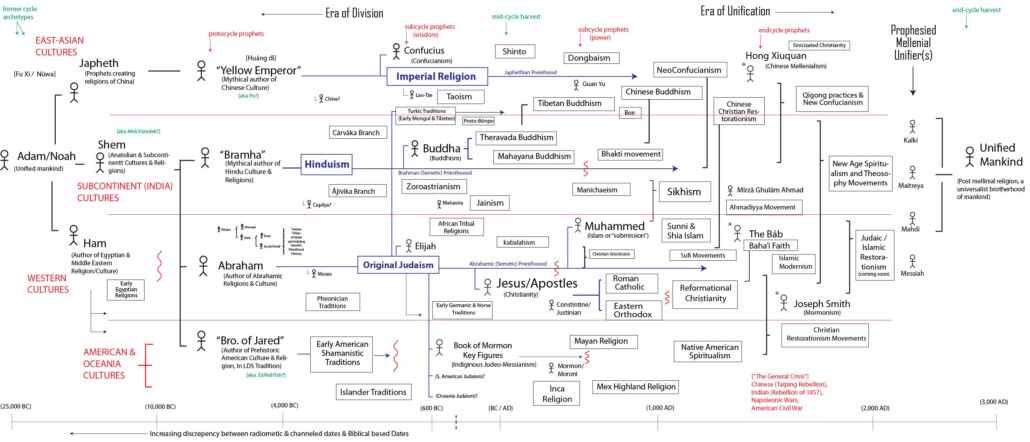
The blind and egocentric see only their small part in the great drama—without understanding how all things fit together in the grand plan.
The Lower (Aaronic) Priesthood– A Symbol of Temporal or Earthly Churches
In this article I attempt to show that the LDS Aaronic or lower/temporal priesthood was designed to be a symbol of the “temporal” priesthood or earthly authority given to many of the earth’s major religions & political organizations. (Just as the Melchizedek priesthood was meant to be a symbol of the High Spiritual Priesthood angels use to govern the earth). Thus both the LDS Aaronic and Melchizedek priesthoods are actually part of the true temporal lower priesthood or ministerial priesthood, and like the temporal church are supposed to copy the higher perfect heavenly system and prepare individuals for a future time when they might be ordained by heaven to be put in true positions of religious and political authority to govern people according to their agency.
Much like the name of the Melchizedek priesthood is meant to teach us that it symbolizes something greater than Abraham and Israel, I believe the name and biblical story behind the Aaronic priesthood is also meant to teach us something profound about its lower preparatory nature. The creation of the Jewish Aaronic priesthood is a story of a people so unable to give up their idolatrous cultural religious understandings — that divinity had to create for them a sort of half-way house, to slowly wean them from worshiping human-made idols to a more true understanding of the one God . (see Romans 1:21–25, 1 Tim 1:17;6:16)
More so than the biblical narrative, LDS scripture sets the stage for the relationship between the Egyptian religion and priesthood, and the Jewish religion and priesthood. Joseph’s Book of Abraham details how the true patriarchal priesthood was counterfeited and corrupted from the earliest days of civilization. In the first chapter of Abraham we are told that the first Pharaoh, son of Egyptus “imitated” the order of the priesthood with a theocratic organizational structure which although patterned after the spiritual priesthood of heaven (Abr 1:23–27), soon came to miss the mark of its purpose. Instead of using priesthood to encourage leaders to serve the people in equality— Egypt’s system was overtaken by Satan’s false priesthood where the people served the leaders who set themselves up as demigods and manipulated the people into worshiping them, their idols and their twisted religion (Abr 1:9). As always, the result of this condition was social division and physical/spiritual bondage.
God rose up Moses to lead Israel from this idolatrous bondage, seeking not only to free the Israelites from physical slavery, but from the religious manipulation of Egypt as well. He wanted them to see that they didn’t need the Egyptian system of ordained priests or temporal religion “built with human hands” (Heb 9:24,2 Cor 5:1, Acts 17:24) — but had within themselves the ability to personally approach the true God and his heavenly church (as a nation of priests) if they would only believe and be righteously unified (Ex. 19). We can assume this is the gist of what D&C 84:23 says that “Moses plainly taught to the children of Israel in the wilderness, and sought diligently to sanctify his people that they might behold the face of God”. But Israel (as a type of humanity) simply wasn’t evolved enough and wasn’t yet able to be ruled by the spiritual priesthood or align themselves with the spiritual true church. In consequence, while Moses was on the Mount they convinced Aaron to help them build a Egyptian golden calf and began to worship it in the manner of their cultural conditioning.
So since they hardened their hearts to the higher law (which was the simpler, kinder and more free spiritual system Christ brought them 1600 years later), God gave them their desires (Jacob 4:14, Rom 1:28) for a temporal religion “built with human hands”; complete with an Egyptian-styled tabernacle, a rigid legalistic code, a genocidal decree to kill dissidents and conquer by force their land of promise, an insanely exclusive (see Num 16) priesthood of priests led by Aaron and his seed who had already shown they were all too willing to help give the people the idol, rigidity and violence they were used to, needed and wanted (read Exod. 32:19-29). And most importantly an edict for the people and priests to kill harmless lambs and doves as a symbol of what their (and all) corrupted, idol-based religions would inevitably do to innocent and Christ-like people throughout human history. (see BOBK 58) D&C 84 sums it up like this,
23 Now this Moses plainly taught to the children of Israel in the wilderness, and sought diligently to sanctify his people that they might behold the face of God;
24 But they hardened their hearts and could not endure his presence; therefore, the Lord in his wrath, for his anger was kindled against them, swore that they should not enter into his rest while in the wilderness, which rest is the fulness of his glory.
25 Therefore, he took Moses out of their midst, and the Holy Priesthood also;
26 And the lesser priesthood continued, which priesthood holdeth the key of the ministering of angels and the preparatory gospel;
27 Which gospel is… the law of carnal commandments, which the Lord in his wrath caused to continue with the house of Aaron among the children of Israel until John… (D&C 84:23–27)
This act of the Lord of giving Israel up to the god & temporal religion they desired (see Rom 1:23–24, Acts 7:42), was very similar to the same thing which would happen 400 years later when the people decided they wanted a king. Even though Samuel warned them, “you know what a king will do to you right?” They said, “we don’t care! we want an empire!” Like the kings who gave up their limited but true innate power for the illusion of power offered by Sauron’s rings, Israel abandoned Moses’ more democratic system of judges for the promise of imperial glory. According to their desires, God gave them Saul & David who formally institutionalized and correlated their largely self-invented theocracy, and thus the monarchical age of Israel began.
The above condemning narrative, is almost the exact thing Stephen preached to the Jews just before they stoned him to death (Acts 7:2–55). Its harsh medicine for the orthodoxy of any religion to deeply introspect and ask themselves what aspects of their religion are lower manmade corruptions of divine symbols, and which parts are truly the higher spiritual reality itself. And perhaps having the exact answers to that question aren’t as important as simply maintaining a pervasive attitude of humility and ecumenical cooperation in our own religious worship (Mosiah 4:11–12, 3 Ne 11:29–30).
This idea of humility and cooperation combined with LDS scripture we’ve gone through contrasting the lower and higher priesthoods can serve to harmonize the theological paradox of universal priesthood versus ministerial priesthood. Our very priesthood branches, offices and organization seem to be a type or symbol of the way heaven gathers and organizes religious branches and congregations into one universal temple, covering or tabernacle held to the earth by stakes, apostolic witnesses and universal prophets. A symbol of how divinity ordains mankind to priesthood either by the laying on of human hands or without human hands “in the womb” (D&C 84:28; 90:10-11, Gal 1:15). Groups who seek exaltation are taught either by the voice of angels, God’s servants or by the Holy Ghost itself (2 Ne 32:3, 3 Ne 15:23). If a church or people are given a temporal priesthood, that priesthood pertains to their group or posterity only; and gives leaders the authority to rule however they see fit (D&C 68:4). But if they rule poorly their priesthood and dominion are taken away as apostacy breaks down their organizations and followers are given to others who are more fit to rule (Matt 21:43, 1 Sam 15:28, D&C 121:45). Once a group creates Zion or attains the level of unity required for entrance into celestial or heavenly glory they are gathered, properly authorized (if they haven’t already been) and brought through the veil by their celestial ambassador or archetype (Christ in our case). (see 3 Ne 11, 1 John 3:1–2, Matt 24:30–51)
If we as the LDS church seek to follow Jesus Christ, be a part of his spiritual one true church, prevent apostacy, and keep our priesthood from being corrupted into the priesthood of the devil, we need to maintain an attitude of humility. An attitude that we likely need to work on in so many ways. An attitude that never seeks to make oneself first. One that always looks for the good and divinity in others. An attitude that learns to harmonize democracy, autocracy, ministerial priesthood and universal priesthood. One that puts the Golden Rule and common sense above dogma. An attitude that just like both Christ and the heroes of Lord of the Rings, tries to resists the corrupting influence of political or religious authority and stays humbly on a quest to cast down inequality and corruption.
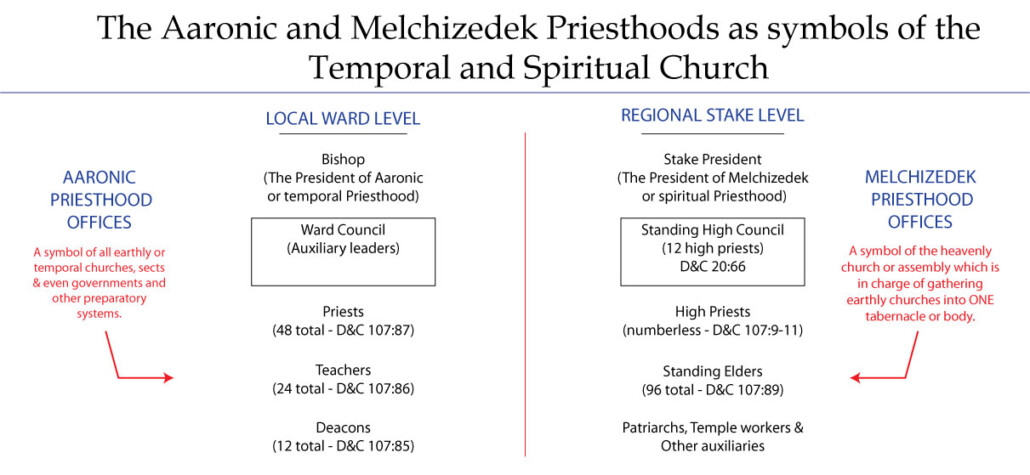
The three tiered, two priesthood structure of the LDS church may very well be a symbol of principles outlined in this article. The Local ward is led by a Bishop who is the president of the Priests Quorum and Aaronic Priesthood of the ward. He being in charge of the ‘temporal affairs’ of the local, most divided level of the temporal church. Wards are brought into one tent/tabernacle by the Stakes. These unifying administrative units are led by the Stake President who is the president of the stake Melchizedek or spiritual priesthood (and High Priests quorum)—much like the spiritual or heavenly church in the Terrestrial Glory serves to teach, lead and unify the more divided Telestial religions (see D&C 76:87–88,98–100. The Stakes are in turn unified and ministered to, by the President of the Church and High Priesthood and General Authorities of the church, a symbol of the ‘General Assembly of the first-born’ or High Priests of the Celestial Glory (D&C 76:67, 87).
The Bright Future of Mormonism if we Repent
All this talk of incorrect LDS cultural practices and prideful traditions concerning priesthood need not overshadow the bright future that LDS scripture lays out for LDS people if they humble themselves and prove fit. The Christian narrative prophesies the downfall of Satan’s manipulative force-based systems as the Judeo Christian fellowship casts the “one ring” which controls the Church of the Devil and its false priesthood of dictatorship, autocratic states, and religious fundamentalism into the fiery pit of Mordor from whence they came (Rev. 20:10–15). In the following article we will see how Judaism and Christianity have followed a divinely given pattern which helped these cultures to largely lead, colonize and revolutionize the world over the last 4000 years. Most LDS teachings on priesthood are full of beauty and light if we simply omit the prideful aspects which try and suggest we are the ONLY true church and ONLY valid priesthood line on earth. Attitudes like those framing the fourth temple recommend question simply need to be reworded to clarify that LDS leaders are the only one’s on earth authorized to exercise all the priesthood keys which have been given and renewed to the LDS people (with a recognition that our keys are obviously limited to our small but growing flock). In the following article I will show that “the priesthood” was NOT taken from the earth during the Times of the Gentiles, and that recognizing its transfer from the Israelites to the Gentile or Catholic Church and its offshoots should actually serve to strengthen our position of faith as we wait for that heavenly power to be transferred back again to those of Israelite descent. (The temporal priesthood transfer being a symbol of the larger spiritual cultural power switch from those of European peoples back to Middle Eastern and Latin American peoples).[5] By looking at the template given in the previous two dispensations we can hold a hope that Mormonism will play a key role in a similar coming amazing cultural trend and gathering work.
.
In my articles on the coming war of Gog and Magog and the End of the Times of the Gentiles, I detail the gradual decline and fall of American and European global hegemony as well as the rise of Israel and Middle Eastern Nations as the new seat of global cultural and religious power. As Catholic and Islamic authority is pummeled over the next few hundred years—the most fit and worthy of the restorationism movements will raise to fill the voids. If Mormons will just realize that WE are the gentiles mentioned in 1 Ne 14:5, 2 Ne 6:12, 2 Ne 28:32, 2 Ne 30:2, 3 Ne 16:13, 3 Ne 20:15–20, 3 Ne 21:6, Ether 8:23, and that If WE repent (or in other words drop our pride and selfish cultural practices), the culture we have built will not only persist a thousand years into the future, but it will become the foundation for an amazing system of political and religious vibrancy to advance the earth into an age of technology and enlightenment we can only now dream of. We simply need to drop our pride and fundamentalism and join hands as we gather with all our brothers and sisters in a spirit of mutual respect and ecumenical cooperation on equal political and religious footings.
.
Other Articles In This Series
Article 1. Re-examining what LDS scriptures say about the ‘Only True Church’ doctrine.
Article 2. A Doctrinal Look at The Universal Priesthood of God & Its Relationship to LDS exclusive truth claims.
Article 3. Re-examining the LDS adoption of the protestant fundamentalist view of the “Great Apostasy”.
Article 4. Clearing up Misunderstandings in the LDS View of the Afterlife (The 3 Degrees of Glory and their support for religious pluralism)

